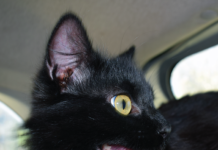Preferred Feeding Times
Cats eat differently than we do. If given the opportunity, cats would consume seven to 20 small meals a day and would seek out the texture and protein found in a field mouse over the spongy texture and sweet taste found in a slice of cake.
Cats require different nutritional needs than we do to thrive. While people are omnivores (our bodies fare best with protein, vegetables, fruits, and grains), cats are obligate carnivores. Their bodies need high-quality proteins to operate efficiently.
Yet, when a cat bypasses a bowl of new kibble, ignores a helping of new canned food, or turns his nose up when offered a new shaped treat, he is often labeled as finicky by his owners.
“Cats are no more finicky than humans or dogs,” says Leni Kaplan, DVM, MS, a lecturer in the Community Practice Service at Cornell University College of Veterinary Medicine. “Due to factors such as texture, taste, temperature, novelty, abundance, and aversive consequences, some foods are more or less appealing to some cats. In addition, hormones and other physiologic and/or environmental and social factors will influence a cat’s appetite.”
Alas, the plain truth is that eating habits of cats are at least partially dependent on their owner’s preferences and lifestyles—be they healthy or unhealthy choices. Far too many cats become overweight, even obese, when owners don’t measure food portions and allow cats to feed from overflowing food bowls all day. Out of boredom, some cats will just eat—a lot. Sound familiar?
“Since our domesticated cats are mostly indoors and less active than outdoor cats, my preference and recommendation is to meal feed and not leave food available for grazing all day long,” advises Dr. Kaplan.
“Even with meal feeding, food should only be available for a short time frame—15 to 20 minutes—and then picked up and stored away until the next meal,” Dr. Kaplan says.
Cornell Clinical Trial: Analyzing Feline Sepsis
Sepsis is a life-threatening syndrome characterized by the body’s response to a serious infection. It is associated with severe illness, long stays in the hospital, and a high risk of death.
Although sepsis in cats is less common than in dogs, cats have a higher risk of dying from their infections.Cats with sepsis tend to have a low heart rate, low body temperature, and stomach pain. It is not known why they develop these clinical signs or why they have lower survival rates compared to people or other companion animals.
These unique aspects of sepsis in cats are the basis for a new study.Cornell will enroll cats with naturally occurring sepsis and examine multiple facets of the syndrome to provide insights into why cats behave differently compared to other species. The Cornell staff will assess the diagnostic results of these cats to help determine what makes them different from other species and to develop new diagnostic tests and treatments for sepsis.
Any cat who weighs at least nine pounds, is diagnosed with bacterial sepsis, and is admitted to the Cornell University Hospital for Animals will be eligible. Sepsis will be defined by suspected or confirmed bacterial infections and by a high or low heart rate, high respiratory rate, high or low temperature, and high white blood cell count. Cats with a known coagulopathy or severe thrombocytopenia will be excluded.
The study pays for some imaging diagnostics, an EKG recording, bloodwork, and bacterial cultures (a total of about $700). All testing will be performed in house and no follow-up visit is required.
If you think your cat might qualify, discuss the possibility first with your own veterinarian. If he or she agrees, contact the Cornell clinical trials research coordinator at 607-253-3060 or emailvet-research@cornell.edu.



